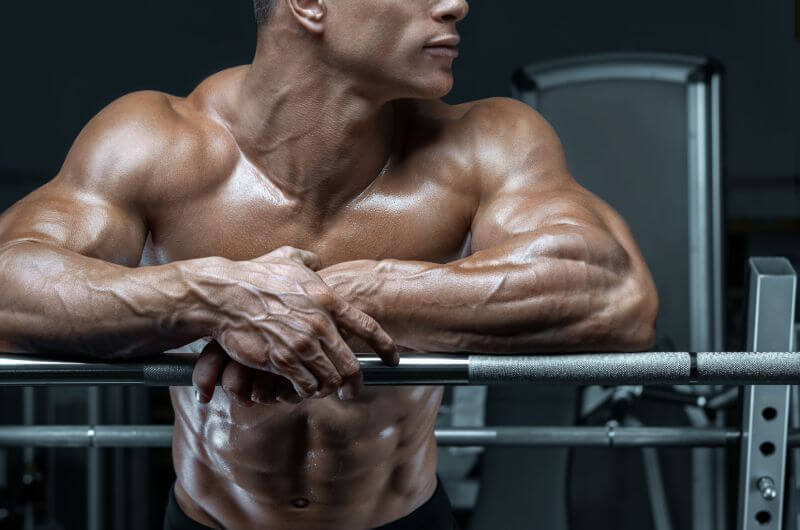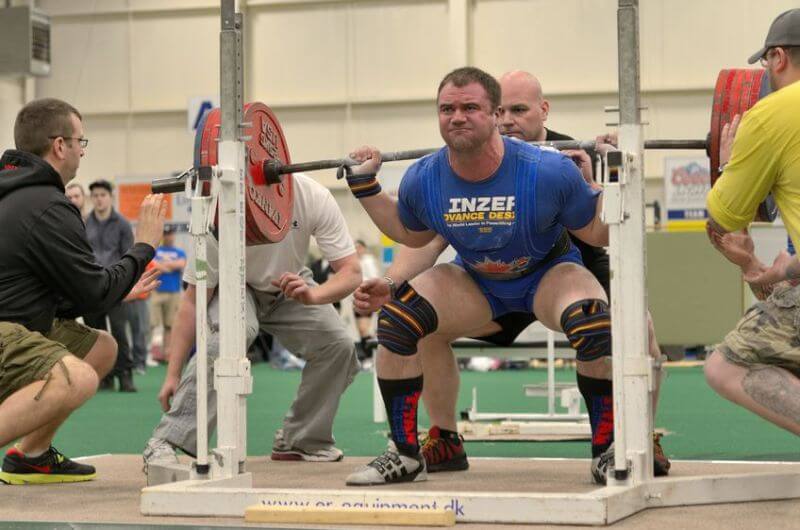To belt, or not to belt?
Poke around on the Internet, and you’ll find a lot of answers to that question, and a lot of heated debate.
Many people believe that you should always wear a weightlifting belt under all circumstances because it significantly reduces your risk of injury.
Others are adamantly opposed to belting for various reasons, including not actually improving performance, stunting core development, and undermining joint health.
Others still are somewhere in the middle, believing that belts are appropriate for some people under certain circumstances and inappropriate for others.
Who’s right and who’s wrong?
Well, there’s a bit of truth in each of these schools of thought.
The reality is this:
Multiple studies have shown that a weightlifting belt can improve your performance on key exercises like the squat and deadlift, but it probably doesn’t reduce your risk of injury.
And that’s assuming you know how to use it properly.
Most people don’t, though, and not only miss out on any possible training benefits, but actually increase their chances of getting hurt.
Let’s break down why.
Who Should and Shouldn’t Use a Weightlifting Belt

Research shows that wearing a belt can help you generate more force and bar speed on the squat and deadlift, which translates into higher one-rep-maxes and more reps with any given weight.
This, over time, can mean greater gains in muscle and strength (assuming that you’re following a well-designed weightlifting program that emphasizes progressive overload).
According to Dr. Stuart McGill, however, who’s widely recognized as the preeminent authority on spinal biomechanics, a weightlifting belt can only improve performance when spinal flexion occurs.
In other words, according to Dr. McGill, a belt can only benefit performance when an exercise like the squat or deadlift is done with poor form (your spine should remain neutral in these lifts, never flexed).
There’s probably more to that story, though, because there’s little doubt among competitive strength athletes that know and practice proper form that a using a belt increases performance.
I’m no Dr. McGill, but I do think the weight of the evidence points toward the conclusion that, when used properly, a belt can indeed improve weightlifting performance when both good and bad form are used.
“When used properly” is operative there, though, because simply strapping a belt on doesn’t accomplish this.
You have to “activate” it by pressing your abs out and against it as you perform the exercises, thereby increasing intraabdominal pressure levels.
This helps stabilizes the spine, creating a mechanical advantage that can result in slightly better performance on certain exercises.
(You can achieve a similar effect with the valsalva maneuver, but not as forcefully and effectively.)
That doesn’t necessarily mean you must use a belt in your weightlifting, though.
They’re most relevant to bodybuilders, powerlifters, strength athletes, who live and die by how much weight they can lift for how many reps.
If, however, you’re not in any of those buckets, or if you find training with a belt particularly uncomfortable, you can do just fine without one.
You should also skip the belt if you have high blood pressure or hernias, because spiking intraabdominal pressure also spikes blood pressure and can aggravate hernias.
There are also people that believe in training beltless because it reflects your true, unassisted strength, and forces you to learn how to properly stabilize your body yourself while you lift, and I agree to a point.
If you can lift significantly more weight with a belt than without one (more than 10 or 15%), then you could benefit from training beltless and improving your technique.
I also mentioned earlier that, in some people, wearing a belt increases the risk of injury.
The reason for this is twofold:
1. They don’t know how to wear and use it properly.
2. They think it magically protects them from injury regardless of form, and get overzealous and sloppy in their lifting.
We’ve all seen these guys in the gym.
The belt is too low to be used properly as an abdominal brace and they look like scared cats as they squat and deadlift weights that they would never attempt without the “protection” of the belt.
Well, the belt isn’t protecting them against injury, and thus, their risk of getting hurt has just gone way up.
How to Correctly Choose and Use a Weightlifting Belt

A good weightlifting belt is rigid, allows you to reach depth in your squats, and get into a proper starting position in your deadlifts.
Rigidity is determined by the belt’s thickness, and I like 10 mm because it’s stiff enough to do its job, but also breaks in quickly (making it more comfortable to use).
The factor that most determines how well a belt will function is its width.
If it’s too skinny, it doesn’t offer much surface to press your abs against. If it’s too large, it won’t work for deadlifting (you won’t be able to comfortably get into the starting position).
I recommend that you start with a belt that’s 9 or 10 cm wide, as this is what most people find most comfortable.
If, however, that’s too wide for you to deadlift in comfortably, you’ll need to go with a thinner belt, or one that’s tapered in the front.
Let’s now talk latches.
You have two choices: prongs and levers.
Levers are faster to put on and take off, but you only get one level of tightness, which can be problematic when switching between squats and deadlifts, or when you eat a bit too much the night before.
That’s why I prefer a pronged latch, and a single prong in particular, because it’s easier to use, and more secure.
In terms of belt brands, I’m of the mind that it’s worth paying a bit more for the best, because it’s going to last forever, so I’m partial to the best: Eleiko and Inzer.
Alright, so you’ve chosen a belt, and now just need to know how to use it properly. Here’s how it works:
1. The first step is properly positioning it on your torso.
For most people, the best position is right above the hip bones.
Some people like to angle it a little up, above the belly button, or a little below, and either is fine. Go with what’s most comfortable.
2. Then there’s tightness.
The rule is you want it to be as tight as possible while still allowing for a full breath into the belly. If you can’t do this without raising up, it’s too tight.
For this reason, you’ll probably find that you need the belt to be a little looser when you deadlift than when you squat, because of the deadlift’s starting position.
It’s also worth noting that you might find the belt uncomfortable at first, before it’s broken in.
That’s normal, and you can either get a thinner belt, or just deal with it until it gets more comfortable.
The Bottom Line on Weightlifting Belts
A belt doesn’t inherently decrease the risk of injury, but can improve performance on key lifts like the squat and deadlift.
It accomplishes this in the same way as the valsalva maneuver: by increasing intraabdominal pressure, and thereby spinal stability.
So, if you can safely increase your intraabdominal and blood pressure levels (you have normal blood pressure levels and no hernias), and if you want to do everything you can do get the most out of your weightlifting, then it makes sense to use a belt when you squat and deadlift.
If, however, you find it tremendously uncomfortable, or just enjoy lifting without a belt more, then you shouldn’t feel you have to use one. You can do just fine beltless.
What’s your take on using a weightlifting belt? Have anything else to share? Let me know in the comments below!
Scientific References +
- Bouby N, Fernandes S. Mild dehydration, vasopressin and the kidney: Animal and human studies. Eur J Clin Nutr. 2003;57(SUPPL.2). doi:10.1038/sj.ejcn.1601900
- Lander JE, Hundley JR, Leslie Simonton R. The effectiveness of weight-belts during multiple repetitions of the squat exercise. Med Sci Sports Exerc. 1992;24(5 SUPPL.):603-609. doi:10.1249/00005768-199205000-00015
- Harman EA, Rosenstein RM, Frykman PN, Nigro GA. Effects of a belt on intra-abdominal pressure during weight lifting. Med Sci Sports Exerc. 1989;21(2):186-190. doi:10.1249/00005768-198904000-00012
- Finnie SB, Wheeldon TJ, Hensrud DD, Dahm DL, Smith J. Weight lifting belt use patterns among a population of health club members. J strength Cond Res. 2003;17(3):498-502. doi:10.1519/1533-4287(2003)017<0498:wlbupa>2.0.co;2










